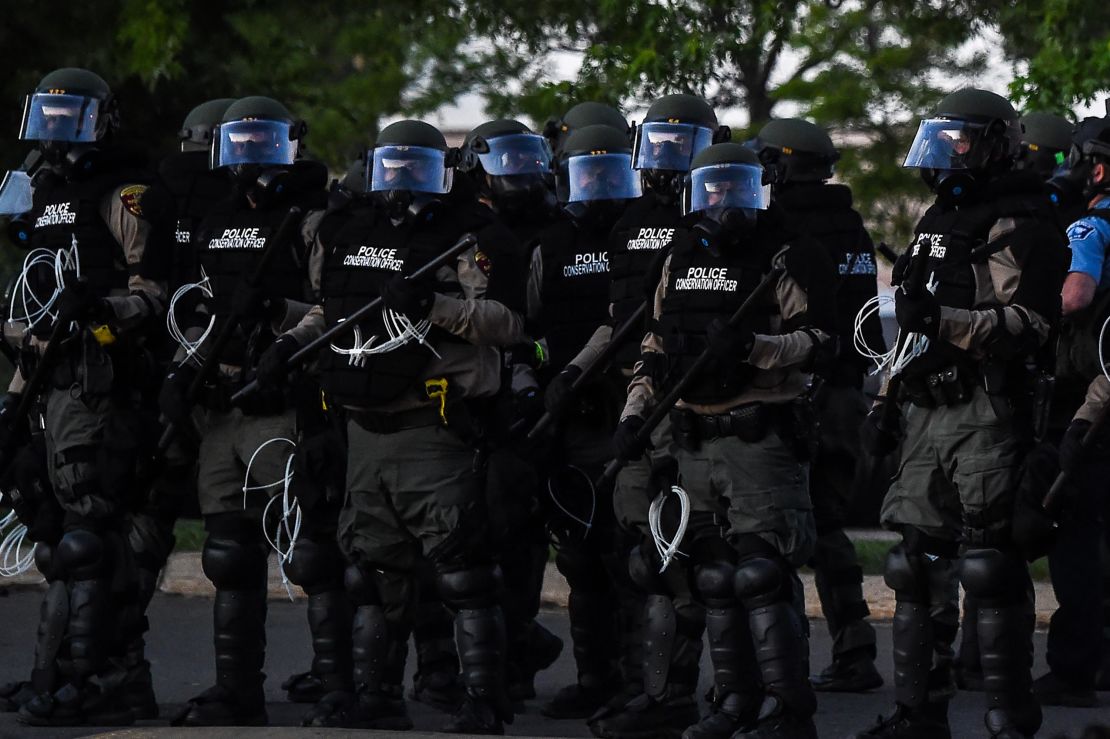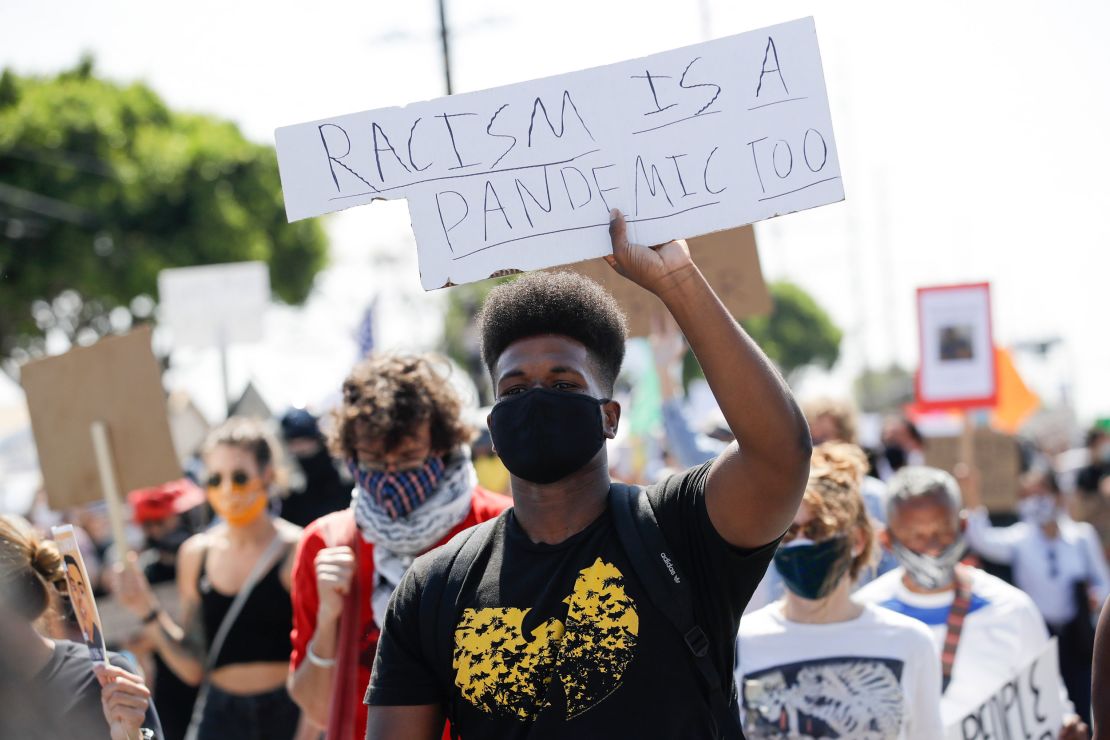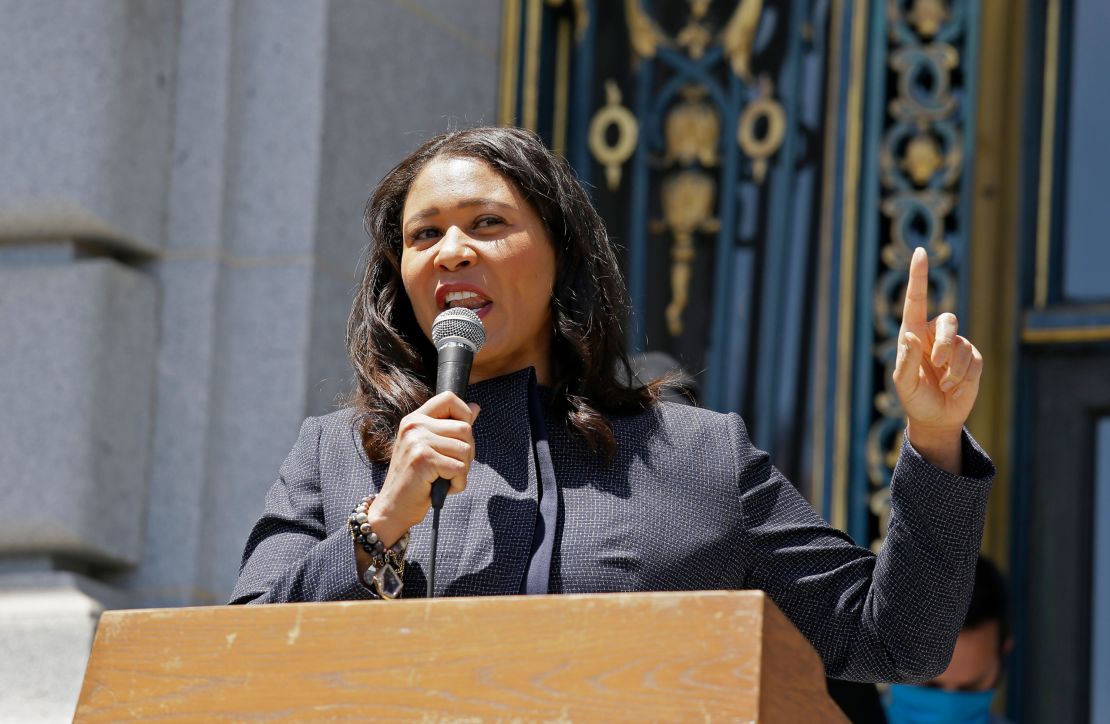“Defund the police!” has become a common chant of US activists protesting the death of George Floyd.
The calls have multiplied as other instances of police violence against African-Americans have come to light. But what it means depends on who you ask.
Some activist groups want entire police departments dismantled because of what they perceive as institutional racism, and the creation of an entirely different model of community-led public safety.
Others say it’s about shifting funds from law enforcement to community-based alternatives. Other countries, from Sweden to Portugal and Scotland to New Zealand, offer plenty of lessons in how it can be done.
Alex Vitale, a Brooklyn College professor and author of “The End of Policing,” has been advising campaign groups on defunding across the US for several years, and told CNN there are “all kinds of examples” of how it can work.

“The idea here is not that tomorrow we just pull all the police off the streets. We’re talking about investing in targeted specific community interventions that would allow us to dial back specific police functions,” he said.
Support for defunding is far from universal. Around seven in 10 Americans say they are very or somewhat satisfied with their local police, according to Monmouth University polling.
But a majority of the public – 57% – now say police are more likely to use excessive force with a Black person than a White person in similar situations. Only one-third of the country held this opinion four years ago, the poll found.
Many of the US police departments facing defunding calls are accused of systemic racism. The American Civil Liberties Union (ACLU) alleges that departments in New York, Chicago, Philadelphia, Boston and Detroit reserve their most aggressive enforcement for Black people living in deprived areas.

“Black people continue to be murdered and brutalized by police with near impunity. More of the same won’t fix this problem,” ACLU director Anthony Romero wrote.
Special weapons and tactics (SWAT) teams are more often deployed in communities of color than elsewhere, according to a study published in the Proceedings of the National Academy of Sciences. But several studies found they offered no detectable benefits in preventing violent crime, although the data is far from complete.
In Minneapolis, where Floyd was killed, accusations of violence and racism among officers and attempts at police reform go back 100 years. Campaigners who have been working to create “police-free communities” now have the support of city council members, who have pledged to dismantle the police department and move money to community programs.
Elsewhere, there are plans to shift some of the New York Police Department’s $6 billion funding to youth and social services. Los Angeles will cut up to $150 million from the LAPD to pay for community policing and San Francisco’s mayor proposed ending police involvement in dealing with neighbors’ disputes, homeless people and schools.
Lessons from abroad
The concept of defunding the police in order to reduce crime is counter-intuitively effective, its supporters say.
“In the United States, a huge amount of what police do is managing folks having mental health crises, experiencing homelessness, suffering from drug overdoses,” said Vitale.
“These are responsibilities that could be better handled by medical professionals, outreach workers, and frankly the provision of supportive housing and high-quality drug treatment and mental health services. Policing isn’t the right tool,” he added.
Many nations have reduced the range of police responsibilities while investing in social programs. This often involves freezing police budgets or cutting their numbers while investing in agencies running programs relating to housing, income, youth, mental health and rehabilitation.
The Swedish capital, Stockholm, established a psychiatric emergency response unit to respond to crisis calls from people in mental health distress, which patients say has created a safe environment and space for dialogue.
In New Zealand, parts of Australia and parts of the US state of Nevada, units were closed when sex work was legalized, which Vitale said meant sex workers were “less likely to be victimized because they’re operating now in a legal economy with regulations.”
Catherine Healy, national coordinator for the New Zealand Sex Workers’ Collective (NZPC), told CNN police “loomed rather large” when she was a sex worker in the 1980s and 1990s.
Healy said New Zealand’s legalization of sex work, in 2003, was followed by an increased willingness to report crimes “right across gender and ethnicity,” including Maori and transgender sex workers.
Vitale also points to Portugal’s decriminalization of drugs and investment in social work in 2001. “They’ve largely removed policing from any involvement with this issue.” Instead, he explained: “They’ve turned it over to health authorities. Health outcomes have improved and civilization has not collapsed.”
Goncalo Fonseca, a photographer from Lisbon, recalls people using drugs on the streets when he was younger. “We had a huge problem in the 90s, with the heroin … epidemic. Harsher policies came into effect. And this created a large inmate population in our prisons that were kind of bursting at the seams,” he told CNN.
Fonseca, who spent three months working on a project with outreach workers, psychologists and nurses, said the drug users he had met now “felt that they had a lot more support” and “a way out.”
Drug policy groups said the shift from policing to social work led to an increase in people accessing treatment, and a decline in overdose deaths, HIV infections, and incarceration for drug-related offenses.
Training and tactics
Police forces elsewhere have embraced training and tactics for de-escalation, which police in the UK say have helped their interactions with individuals with mental health issues.
In Scotland, officers are trained in de-escalation methods including identifying danger signs early and approaching a subject calmly.
Police set up the Scottish Violence Reduction Unit (SVRU) in 2005. The unit now receives $1.3 million from the government annually.
It takes a public health approach, employing police, experts and people with lived experience in social programs. The programs include outreach work in emergency wards and enterprises that offer hospitality jobs to people with convictions.
Violent crime and homicides in Scotland have dropped by 25% in 10 years – although it’s unclear how far this can be attributed to the SVRU.
Los Angeles’ Police Commission has announced it intends to complete de-escalation training for the whole force this year.
Community policing, which involves partnerships between officers, agencies and communities, is described as a “major pillar” of police development by the Organization for Security and Co-operation in Europe (OSCE).
Helsinki, the Finnish capital, is one of many European cities that have established community policing programs in which city organizations, NGOs and agencies work with police to solve problems.
Democratic former Vice President Joe Biden, who will take on US President Trump in November, has proposed investing $300 million in community policing. He also wants to re-establish a Justice Department panel that investigated police practices.
Not everyone sees community policing as the answer. Some campaigners say the expansion of COPS (Community Oriented Policing Services) has only increased the size, scope and potential violence of police. One New York activist said it was an “expensive attempt at public relations, after a long history of racialized police violence and injustice, and does little to reduce crime or police violence.”
Defunding advocates say strategies such as implicit bias training, body cameras and even diverse hiring have had no major impact in reducing violence.

The extent and type of police training also differs greatly, both between other countries and the US and within the US itself. In Finland, police undergo three years of training, including courses on the use of force. In some departments in the US training can last just weeks. Tactics vary from one jurisdiction to another.
President Trump’s Executive Order this month empowered the Justice Department to work with independent bodies to improve police training and policy, including the prohibition of chokeholds outside of situations where deadly force is allowed. An independent autopsy concluded that a chokehold was responsible for George Floyd’s death, and the practice has since been banned by many police departments.
But some government officials, former police chiefs and labor experts have voiced concerns over the power of police unions to block reform and in some instances prevent the removal of corrupt or racist officers.
Some experts question whether police should be involved in leading initiatives to reduce social problems and improve race relations.
Waqas Tufail, a Senior Lecturer in Criminology at Leeds Beckett University in the UK, told CNN that he believes police partnerships do not work. Instead intervention work should be led by social and youth workers to avoid bringing a “law enforcement lens” to problems around “race, class and inequality.”
“When we think about young people in particular, we shouldn’t be moving towards arrest and criminalization, we should be moving towards diversion,” he added.
Scope of policing
The ACLU said the presence of police officers in inner-city US schools increased criminalization of children in poor Black and Latino neighborhoods. Minneapolis parks and schools have now voted to end their relationships with the police, and schools in Denver and Milwaukee are doing the same.
School policing is “a totally alien idea” in Europe, Vitale observes. While there have been moves towards increasing police presence in European schools, officers have a less intrusive, often educational and mentoring role.

Several US cities have established successful programs for reducing youth and gang violence – and some have been replicated in other countries.
The Scottish scheme was based on Los Angeles’ Homeboy Industries gang intervention program and Boston’s Operation Ceasefire, but the LA program faced a 27% drop in public funding in 2018, and the Boston initiative was discontinued – despite its success – in 2000.
However, New York City has just announced financial support for Cure Violence, another NGO previously known as CeaseFire (not related to Boston’s Operation Ceasefire). It employs young people as “violence interrupters” in the US and abroad to help mediate community feuds, monitor gang activity and connect people with outreach workers.
Demeatreas Whatley, head of the Chicago branch of Cure Violence, told CNN that he was once “part of the problem,” but began volunteering after he left prison.
“The violence interrupters, eight hours a day, at least six hours, they’re right there in those zones, those trouble spots, so they know what’s going on,” he said.
“We can get closer to these individuals than the police can. We have good names for ourselves and they know we’re not trying to do nothing but help them. We just need more investment in these types of approaches.”
Cure Violence says work by its previous iteration, CeaseFire, contributed to a 16-28% reduction in shootings in four areas of Chicago in the 17 years to 2009. It also claims credit for a 63% reduction in shootings in South Bronx, New York City between 2014 and 2016.
San Pedro Sula, Honduras, had the highest homicide rates of any city in the world for years. In 2013, it implemented a version of the Cure Violence program in parts of the city and the homicide rate has decreased 53% in these communities over the past three years, according to Unicef.
But funding for the Cure Violence program in Chicago was cut in 2013. Two years later, the state of Illinois also cut funding – which Cure Violence says led to a dramatic rise in homicides.
Social differences
It can be hard to apply lessons from elsewhere in the US when there are many structural differences, including challenges around inequality, systemic racial disparities, lack of social welfare, criminal justice and access to firearms.
Attorney and legal scholar Noah Gimbel believes that many of the differences in crime rates and social metrics in Europe and the US are to do with “the general absence of any meaningful social safety net, or welfare state, in the United States.”
Gimbel told CNN that crime has been on a downward trajectory in the US since the 1980s, but “you still have pockets of high criminal activity,” often in the most heavily policed and poorest parts of cities, which are least served by public services and most affected by racial discrimination.

He said that with cities facing “economic crisis,” now is an opportune moment to reassess spending priorities and “put money into a preventative rather than a reactive approach to controlling crime.”
The US spends about 5% of its general government spending (federal, state and local) – $1,200 per capita – on public order and safety. That’s a higher proportion than most countries in the OECD (Organization for Economic Cooperation and Development).
Of this, Washington DC-based think tank Urban Institute says $115 billion goes on policing every year, plus $79 billion on incarceration.
In some places, having fewer police on the streets has been linked to an increase in crime: the UK’s police federation says that budget cuts are making it harder to function, and violent offenses are rising after years of police austerity.
But a 2017 analysis of studies on the relationship between police numbers and crime found that the effect of adding or subtracting officers was minuscule. “Changing police agency strategy to address crime is far more effective than hiring more officers,” the researchers wrote.
A 2018 report by Juha Kaariainen from Helsinki’s Institute of Criminology and Legal Policy found that Nordic countries have the lowest numbers of police and prisoners per capita in Europe (with more focus on rehabilitation), but the highest levels of trust in the police.
Finland is one of the world’s safest countries, with one of the most effective and trusted police forces – despite having the lowest police per capita ratio in the industrialized world, according to an OSAC (Overseas Security Advisory Council) report. Its Housing First scheme has helped it record one of the biggest declines in homelessness among OECD countries.
Access to guns
But Finland is socially very different to the US: its population is wealthier, firearms laws are far stricter, and its criminal justice system is very different, prioritizing rehabilitation over punishment.
The prevalence of guns is one obvious difference between the US and other countries and inevitably changes the nature of policing. Americans own half of all the civilian-owned guns in the world, according to a 2018 survey, and US police forces fatally shoot many more people than those in similarly developed nations. Police in many countries – including the UK, Ireland, Norway, Iceland and New Zealand – are usually unarmed.
Gun ownership is just one of the profound social differences between Europe and the US that mean policing lessons from other countries may be hard to enact. Gimbel talks of “factors that are systemic in our society, in terms of economic inequality, social inequality, lack of resources for public education, and many other contributing factors to crime in the United States.”
So there are two questions: whether a renewed drive to change policing in the US can make a lasting difference to forces long tainted by accusations of entrenched racism and brutality, and whether that in turn that can help manage deep social fissures.
An earlier version of this story misstated the view of Waqas Tufail about police partnerships. This has been corrected.
CNN’s Tim Lister contributed to this report.







